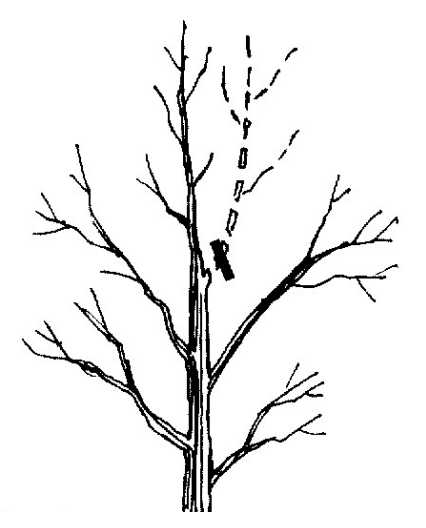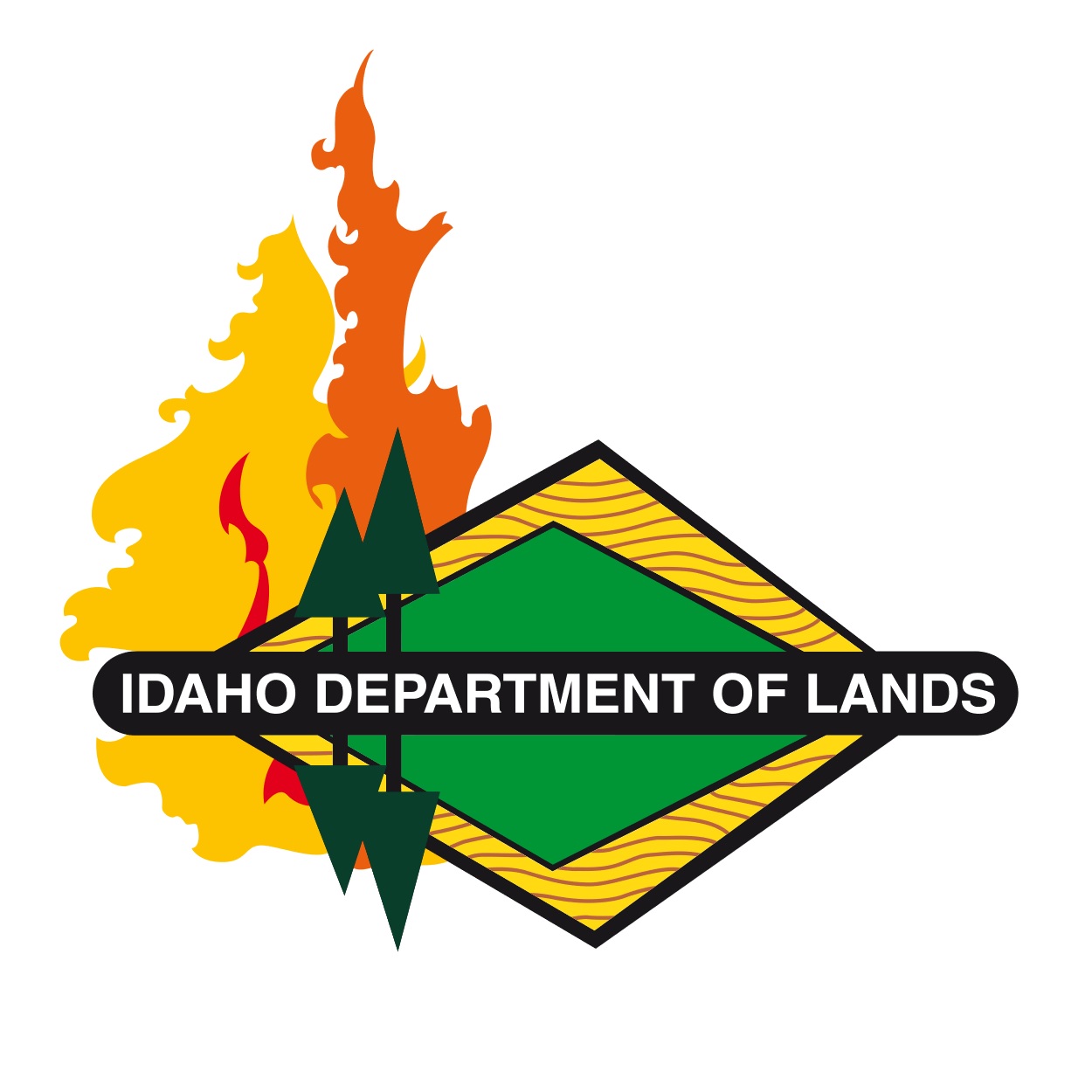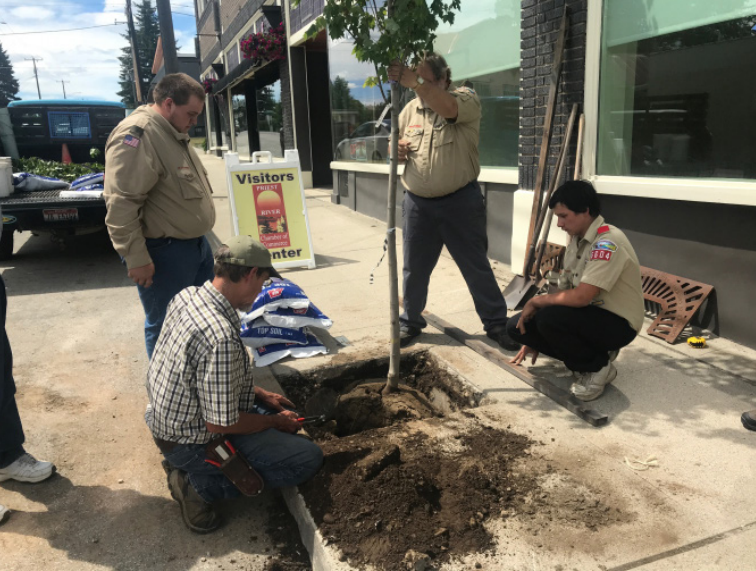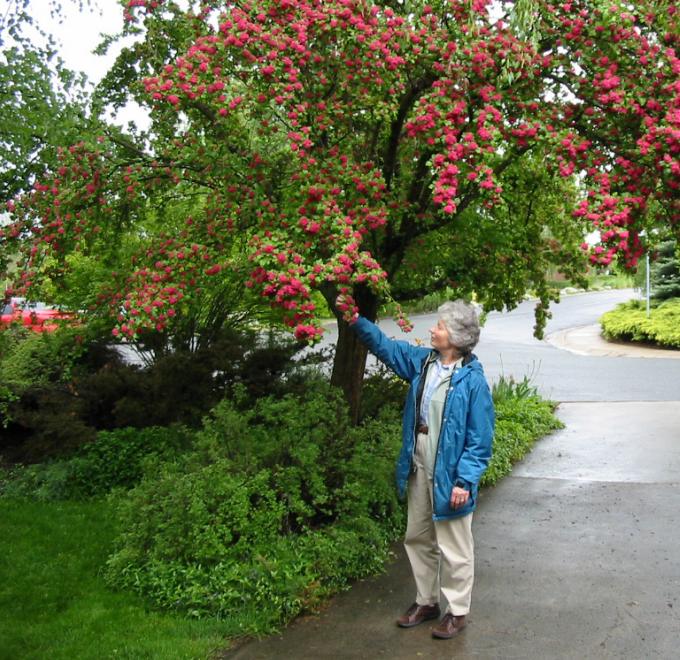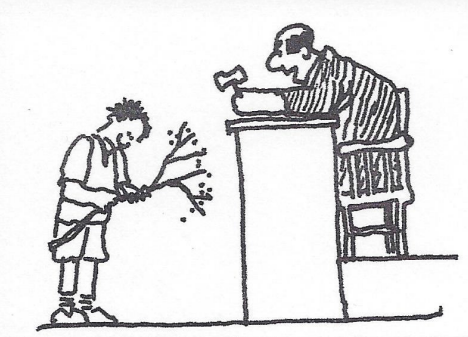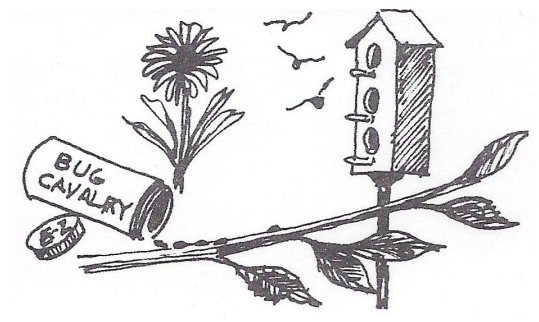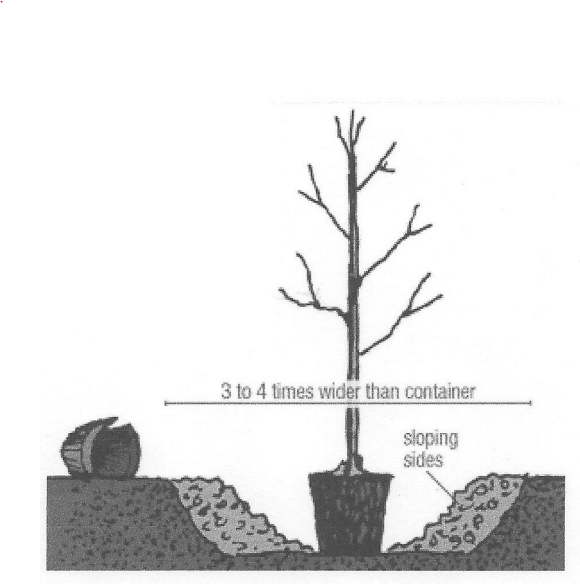Category: All News Releases
Logging of dead and dying trees hit by tussock moth is underway
(BOISE) – Trucks loaded with trees damaged by the Douglas-fir tussock moth infestation in the Packer John State Forest are making their way to area sawmills. The Idaho Department of Lands sold nearly 2,000 acres of dead and dying timber as part of two salvage sales. The tree harvest reduces fire risk, addresses safety concerns to the recreating public, and clears the way to plant trees that are less preferred by tussock moth. The salvage sales also generate money to help fund public schools in Idaho.
B-roll with interview and photos/media opportunity today
High-quality video of logging of the dying trees, photos, and a video interview with Chris Clark, Idaho Department of Lands Resource Manager, is available to the media here: https://www.dropbox.com/sh/t4u1n97k260o4s4/AACRHSKMJJgSEFadJcEajbl6a?dl=0
Chris Clark is available in person today at noon at the Garden Valley Market in Crouch, Idaho. From there he will escort media in their own vehicles up logging roads for interviews and to see the logging operation. The logging is 40 minutes from Crouch. If you would like to meet Chris, please contact Robbie Johnson, Public Information Officer with the Idaho Department of Lands at (208) 908-1786 by 10:30 am.
Additional information: The Hidden Scriver Salvage has loaded logging trucks traveling north through Smiths Ferry on Idaho 55 through Cascade, McCall, then arriving at mills in Grangeville and New Meadows. Logging will start in the Center Howell Salvage area in a few weeks. Those trucks will be traveling south on Idaho 55 into Horseshoe Bend, then turning onto Idaho 52 to reach a mill in Emmett.
All merchantable damaged trees within the salvage sale areas will be harvested except for ponderosa pine and spruce trees, which are not commonly damaged by tussock moth. Those species make up a small percentage of trees within the harvest areas. Most of the logging for these sales will take place this fall until snowfall accumulation makes logging too difficult.
Following salvage operations, the land will be planted with a variety of tree species (ponderosa pine, lodgepole pine, Engelmann spruce and western larch) to make the forest less susceptible to this type of catastrophic damage in the future. While this current tussock moth outbreak has run its course, outbreaks historically happen every 10 to 20 years.
IDL and the Boise National Forest are both working to remove tussock moth damaged trees through timber sales in the area. “Leaving the dead trees standing there, they will decompose, fall over roads, and present other safety hazards,” said Carol Ross, Forest Service Representative for the Boise National Forest. “We are mitigating those future hazards now, and recovering some of the timber value at the same time.”
“These efforts have already resulted in a healthier forest,” said Chris Clark, Lands Resource Specialist, with the Idaho Department of Lands. “The landscape is green, instead of darkened by dead trees.”
# # #
Other Media Materials
Drone video: https://www.youtube.com/watch?v=MzXvyvobbc&list=PLexGgZqmpm6I_iu1RIoKUbfDxwvwTDJbX
Douglas-fir tussock moth FAQs: https://www.idl.idaho.gov/wp-content/uploads/sites/2/forestry/forest-health/packer-john-salvage/dftm-2019-faqs-072919.pdf
NEWS MEDIA CONTACT:
Robbie Johnson, Public Information Officer Idaho Department of Lands W: (208) 334-0286 C: (208) 908-1786 pio@idl.idaho.gov
IDL fire safety burn permit season ends October 21
(BOISE) – Fire safety burn permits from the Idaho Department of Lands (IDL) are no longer required for burning activities outside of city limits beginning Oct. 21.
The fire safety burn permit from IDL is required for any burning (excluding recreational campfires) outside of city limits during closed fire season, from May 10 through Oct. 20 annually.
While state permits will not be required after the 20th, local fire departments, Idaho Department of Environmental Quality (DEQ) and/or tribal authorities should be contacted before burning to determine if other permits are required or if local restrictions are in place.
Humans, not lightning, caused approximately 60 percent of the wildfires this year on lands protected by the Idaho Department of Lands, accounting for more than 98 percent of the acres burned. Many of these fires were preventable as they were ignited by escaped debris burning and campfires.
Please use caution whenever burning by following these steps:
- Check for required permits. Don’t forget to check with local fire departments, DEQ, and/or tribal authorities.
- Be prepared. Keep water, a shovel and other resources on hand to prevent the fire from spreading.
- Check weather conditions. Do not burn when it is windy or when there is a chance weather conditions may change during burning.
- Look up. Choose a safe site for burning- away from power lines, overhanging limbs, buildings, vehicles, and equipment.
- Look around. The burn site should be free from any other combustible materials and dry vegetation.
- Keep your pile at a manageable size. Add additional debris slowly as the pile burns down.
- Monitor. Check the burn area regularly, especially if the weather is warm, dry, and/or windy.
While burn permits are not required after Oct. 20, IDL encourages those who plan to burn to complete the online form as it helps inform fire managers where burning activities are occurring, reducing the number of false runs to fires and saving firefighting resources for instances in which they are truly needed. The permit is free and can be obtained online at burnpermits.idaho.gov or in person at IDL offices statewide.
The IDL issued nearly 17,000 burn permits in calendar year 2018.
# # #
NEWS MEDIA CONTACTS: Jennifer Russell, Fire Prevention and Outreach, 208-666-8685 Sharla Arledge, Public Information Officer, 208-334-0286 pio@idl.idaho.gov
Partnership helping to keep Idaho endowment lands open for recreation
FOR IMMEDIATE RELEASE
September 26, 2019
Partnership helping to keep Idaho endowment lands open for recreation
By Idaho Department of Lands Director Dustin Miller
This time of year, many Idahoans take to Idaho’s forests, rangelands and waterways to participate in
annual fall hunting, fishing and other activities. These traditions are woven into the fabric of our culture
in Idaho and help define us as Idahoans.
Idaho provides exceptional hunting and fishing opportunities, and is one of the most sought-after states
for an incredible outdoor experience. And what makes Idaho such a great place to pursue these
activities is access to public lands, as well as state endowment lands.
The Idaho Department of Lands (IDL) manages nearly 2.5 million acres of endowment forest and
rangelands at the direction of the State Board of Land Commissioners. These lands are different than
federal public lands and are owned by the endowment beneficiaries, which are primarily Idaho public
schools.
Article IX, Section 8 of the Idaho Constitution mandates that these lands be managed in a way that
secures maximum long-term financial returns to the beneficiaries. In fact, because of this mandate, the
Land Board recently approved a 4.5 percent increase in endowment distributions. This sets a recordbreaking distribution of more than $84 million for fiscal year 2021.
The Land Board supports a policy of allowing general public recreational use of legally accessible
endowment land for activities like hunting. But only if those activities do not degrade the lands,
interfere with management activities, or otherwise negatively affect the long-term financial return to
beneficiaries.
A year-old agreement between IDL and the Idaho Department of Fish and Game (IDFG) has successfully
helped ensure that access. Under this agreement, IDFG compensates IDL 25 cents per endowment acre
annually for public hunting, fishing, and other recreational land uses. This helps cover costs associated
with recreation management on endowment lands. The money comes from revenue generated from
hunting, fishing, and trapping licenses, as well as Pittman-Robertson funds, which are an excise tax on
firearms and ammunition.
The agreement satisfies the Land Board’s responsibility to provide a financial return to the beneficiaries
for land use. And IDFG is providing conservation officer services to assist with recreation enforcement to
help ensure that recreational activities do not degrade endowment land.
In addition, IDL is inventorying trails on endowment land and determining how to provide a quality trail
experience that is compatible with the endowment mission. Designated trails will soon be mapped and
signed. Undesignated trails that cause resource damage will be closed and reclaimed.
But please be aware, even with the agreement, there are a few endowment areas not open to the public
due to safety reasons or a lack of legal access.
Access to endowment land in Idaho is important to us as Idahoans, and so long as revenue-generating
activities are respected and not impacted, these lands will remain open for public access and recreation.
As the director of the Idaho Department of Lands, I am asking you to do your part to protect
endowment land while enjoying them. Working together, we can continue to enjoy hunting and other
activities, while also supporting our school children by being good stewards of these lands.
# # #
Invest in Tree Education
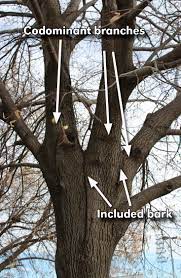
Words Make a Difference: Trimming vs. Pruning
